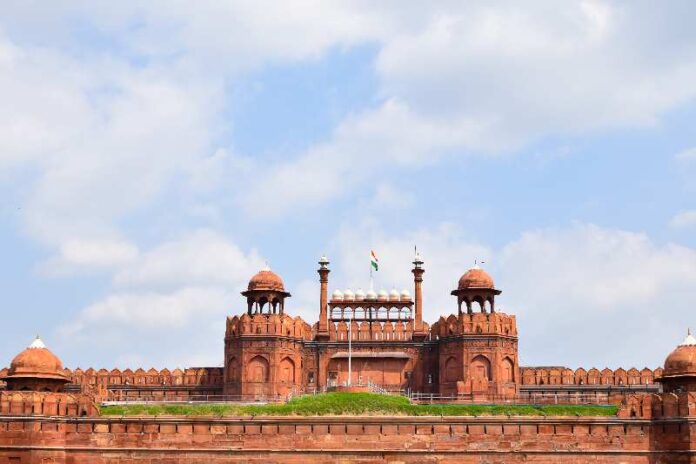
India, a country of vast cultural richness and diversity, is as diverse in its languages as in its customs and traditions. A fascinating tapestry of languages, dialects, and scripts, each region of India has a unique linguistic flavor that contributes to the multifaceted charm of the nation.
India officially recognizes 22 languages under the Eighth Schedule of the Indian Constitution. The country’s official languages include Hindi, Bengali, Telugu, Marathi, Tamil, Urdu, Gujarati, and Punjabi. However, India is home to over 19,500 languages and dialects spoken by its people.
The complexity of Indian languages can be seen in the fact that Hindi alone has several variations, like Braj Bhasha, Awadhi, Khari Boli, and Bhojpuri, to name a few. Similarly, Tamil has different dialects, such as Madras Bashai and Coimbatore Tamil, while Bengali has variations, such as Standard Bengali and Chittagonian.
The influence of history
The diverse linguistic landscape of India is a result of centuries of cultural influences, migrations, and conquests. Some of India’s official languages have evolved from proto-languages, while foreign invasions and trade relations have shaped others.
The roots of Indian languages can be traced back to the Indus Valley Civilization. The civilization’s script is yet to be deciphered, but it gives us a glimpse into the ancient languages spoken in India. Sanskrit, the mother of Indian languages, is believed to have originated around 1500 BCE.
The impact of geography
India’s geography, with its rich and varied topography of majestic mountains, arid deserts, expansive plains, and stunning coastline, has profoundly shaped its linguistic tapestry. The diverse terrain and climate have fostered the development of many unique languages and dialects across different regions.
The Kashmiri language has evolved over centuries in the picturesque mountainous regions, drawing influences from both Sanskrit and Persian. This linguistic fusion has resulted in a beautiful and distinct language that reflects the region’s cultural heritage.
We encounter the fascinating Malayalam language in the vibrant coastal state of Kerala. Malayalam is a linguistic treasure known for its poetic charm and expressive vocabulary. It incorporates elements borrowed from Tamil and Sanskrit, enriching its linguistic palette and further showcasing the cultural and historical connections between these regions.
Regional pride
Each region in India takes immense pride in its unique language, considering it not just a mode of communication but an integral part of its cultural identity. For instance, Bengalis deeply cherish their language, which they fondly call “Bhasha,” meaning the mother tongue. Similarly, the Tamil community reveres their language as “Thai,” symbolizing its significance as the mother tongue.
This profound attachment to their respective languages has fostered a deep-rooted sense of belonging and has played a vital part in preserving and promoting regional languages. Even in today’s era, where English and Hindi dominate most official communication, the rich linguistic heritage of India continues to thrive, embraced, and celebrated by its diverse communities.
The role of education
While India’s linguistic diversity is a source of pride, it has also posed challenges in terms of education. With so many languages and dialects, it becomes difficult to have a uniform medium of instruction for schools and colleges.
To address this issue, the Indian government has adopted a three-language formula, where students learn their mother tongue, the official language of their state, and Hindi or English as a compulsory subject. It has helped promote regional languages while ensuring students have a common language to communicate with people from other parts of the country.
The struggle for recognition
Despite being home to thousands of languages, only 22 languages are recognized by the Indian government. It has led to protests and demands from various communities for their languages to be included in the Eighth Schedule of the Constitution.
For example, Assamese speakers have been demanding official recognition for their dialects, such as Bodo and Mising. Similarly, the Kodava community in Karnataka has been fighting to be recognized as a separate Dravidian language.
Navigating the digital age: Languages and technology
In today’s digital age, technology is crucial in connecting people worldwide. The internet has made it easier for people to communicate and share ideas, breaking distance and language barriers. India’s linguistic diversity has presented challenges for technology companies trying to cater to the diverse population.
Creating localized content and services can be daunting with many languages and dialects. With growth and innovations in Natural Language Processing and Artificial Intelligence, technology can now support multiple languages and dialects, making it easier for people to get information and services in their native language.
The Indian government has also taken steps towards promoting the use of technology in regional languages. The “Digital India” initiative launched by the Indian government aims to provide digital infrastructure and services in regional languages, making technology accessible and inclusive for all.
Final thoughts
India’s linguistic tapestry reflects its rich heritage and cultural diversity. Each language has a unique story, and together, they create a beautiful mosaic that is India. While some languages may have more speakers than others, each one holds immense value and contributes to the country’s vibrant identity.
As India progresses and develops, preserving and promoting its linguistic heritage is essential. The government must work towards recognizing and preserving endangered languages while also finding ways to bridge the significant communication gap between speakers of different languages. Ultimately, the diversity of India’s official languages makes the country unique and enriching.





